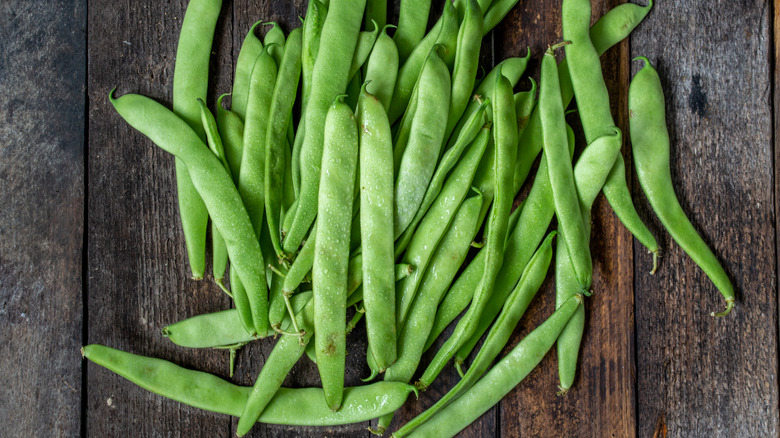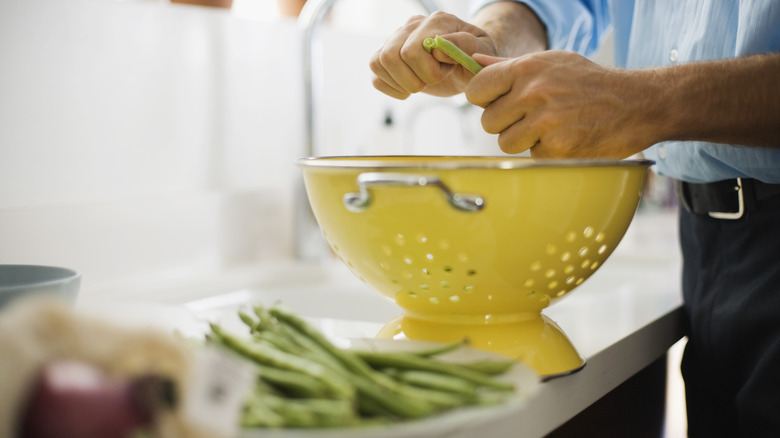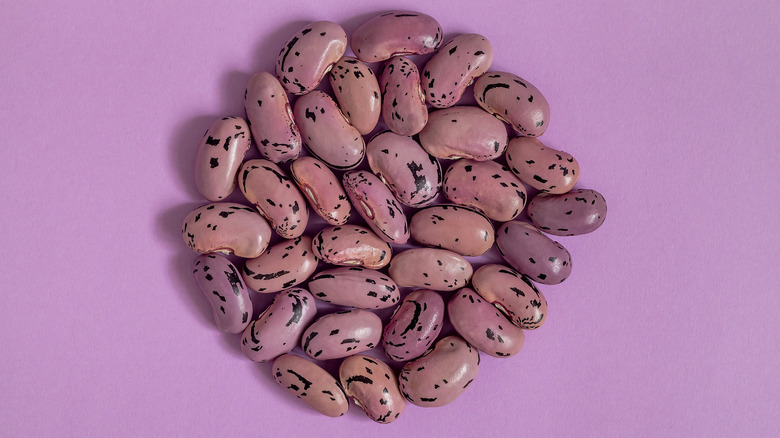The Best Way To Prepare And Cook Runner Beans
Depending on where you live, you may not be familiar with the humble yet delicious runner bean. Runner beans are native to Mexico and Central America, though varieties are common through the U.S. and Europe. Belonging to the same family as peas and green beans and with a similar taste to lima beans, these beans are cultivated for both their ornamental beauty and their delicious taste. The plant sprouts bright red flowers that bloom in the mornings and fold closed overnight. (The flowers are also edible, with a vaguely bean-like flavor, and can be used in salads.)
Runner beans grow easily and quickly, with a short harvest period between July and September. Many home gardeners grow them in their backyards due to the ease of cultivation. But what to do with all those beans come harvest time? The beans keep for about a week in the fridge if stored in a dry, airtight container and kept in the crisper, but you'll want to prepare and either eat or store them quickly after picking them. And whatever you do, don't eat them raw.
Prepare the beans carefully for best results
Unlike other backyard plants, runner beans shouldn't be snacked on raw. Raw beans contain lectins, toxic substances that can cause nausea and vomiting in large amounts. Beyond that, runner bean pods have stringy, fibrous sides that need to be removed before consuming. It's important to prepare the beans properly and cook them thoroughly for the best possible texture and flavor.
To prepare the beans, wash them in cold water and remove the tops and bottoms with a knife, as you would when trimming green beans. Remove the fibrous pod strings by taking a paring knife or a vegetable peeler and sliding it down each side of the pod. Then cut the beans into thin pieces on a diagonal bias.
At this point, if you're not planning on cooking them for a dish immediately, you can freeze them. Don't freeze them raw, though — blanch them first by boiling them for a minute, then remove them and quickly put them in ice water to stop the cooking process. Once the beans dry, you can arrange them on a baking tray to freeze so they don't clump together. Transfer them to a freezer bag once frozen solid.
Boil, steam, or sauté
How should you cook your freshly-prepped runner beans? The most traditional way is boiling them in salted water. The beans should cook in about 5-10 minutes, though you'll want to check for tenderness as they simmer. Boiled beans can be served with salt and butter as a side dish or tossed in with a main course, such as pasta.
If you prefer, you can steam the beans instead. Use a steamer basket if you have one, or pop a covered bowl of the beans into the microwave with a few tablespoons of water for 5-6 minutes. Steamed beans can be served with a dash of lemon zest or a topping of goat cheese (or both).
Alternatively, you can go for a sauté with garlic and onions, ginger, or other aromatics and a drizzle of sesame oil. Cooking the beans in a skillet or wok should have them ready to eat in 3-5 minutes.


